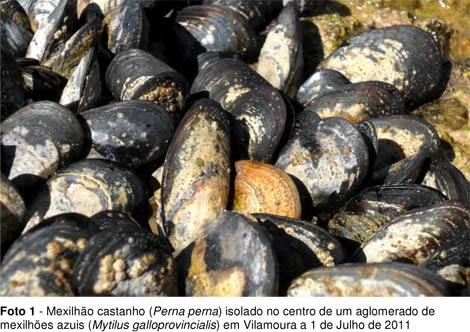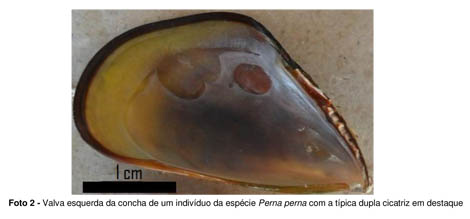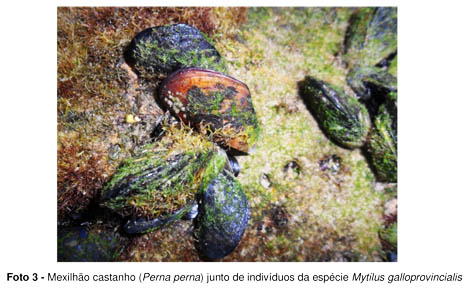 A group of researchers from the Center for Marine Sciences (CCMAR) reported, for the first time, the appearance of the brown mussel leg leg on the European Atlantic coast. Carla Lourenço detected, in the course of the Master's project that she is developing at CCMAR, several individuals of this species that is native to the African continent.
A group of researchers from the Center for Marine Sciences (CCMAR) reported, for the first time, the appearance of the brown mussel leg leg on the European Atlantic coast. Carla Lourenço detected, in the course of the Master's project that she is developing at CCMAR, several individuals of this species that is native to the African continent.
The presence of some specimens of the brown mussel leg leg was observed in the area of Vilamoura and Ilha do Farol, in July 2011, the first time that this mussel was found in the Atlantic coastal areas that border the European continent.
The species, native to the African continent, is easily distinguished from the Mediterranean species. Mytilus galloprovincialis, more characteristic and abundant in our waters, for its typical brownish color, but also for the shape of the shells, the behavior during emergence (the species P.leg tends to open and close the valves, while the species M. galloprovincialis keeps them closed), but still due to the presence of a double scar present inside the shell, resulting from the presence of the posterior adductor and retractor muscles. in kind M. galloprovincialis this scar is continuous without any kind of division.
 O leg leg it is a commercialized species that is quite abundant in Africa, from Mozambique to False Bay, in South Africa, and extending to the Mediterranean Sea from Walvis Bay, in Namibia, to the Gulf of Tunis (Tunisia), exclusively on the African side.
O leg leg it is a commercialized species that is quite abundant in Africa, from Mozambique to False Bay, in South Africa, and extending to the Mediterranean Sea from Walvis Bay, in Namibia, to the Gulf of Tunis (Tunisia), exclusively on the African side.
It is also present in Oman, Sri Lanka and South India, having been introduced to the American continent, and present in Argentina, Uruguay, Brazil, Venezuela, the Caribbean, Mexico and even in the state of Texas.
the species P. leg coexists with the Mediterranean species M. galloprovincialis both in North Africa and South Africa.
In these regions, populations coexist at high densities and have a specific distribution along the intertidal zone, with the species M. galloprovincialis to dominate the upper zones and the species P. leg the lower ones.
In the central zone, the two species coexist in equilibrium, but the same does not happen in Portugal.
 In Portuguese populations, individuals of the species P.leg they are dispersed among clusters of M. galloprovincialis along the intertidal zone occupied by mussels.
In Portuguese populations, individuals of the species P.leg they are dispersed among clusters of M. galloprovincialis along the intertidal zone occupied by mussels.
This low density is characteristic of marginal populations that exist where ecological conditions are less favorable when compared to central populations that live under optimal conditions.
“A monitoring of the two species will in the future allow us to understand the impact of P. leg on the Portuguese coast and whether the coexistence of both species is stable or will evolve into the same vertical patterns observed in other regions», explain the researchers.
The authors of the article suggest that, taking into account global warming and the increase in sea surface temperature, the species has expanded its distribution to the European continent from the previous northern limit of its African distribution in the coastal area of Morocco.
The discovery of the species was reported by Carla Lourenço, master's student at CCMAR, under the guidance of Professor Ester Serrão, also a researcher at the Center. The article was published by the researchers in April, in the journal «Marine Biodiversity Records».


















Comments